Categories
Hot Products
android Barcode Scanner pda with Reader RFID scanner Android 12.0 handheld pda device model:HT518-F20 Android12.0 touch screen 5.45inch More
5.0 Inch Android 11 NFC 1D 2D Code Handheld Terminal Printer POS model:H8 4G/3G/GPRS Android 11 5MP camera 5.0inch More
Android 9.0 Rugged Pda android Barcode Scanner handheld uhf rfid reader model: HT518D-F7 Android 9.0 physical keypad 4inch More
android 12 Barcode Scanner pda with Reader 1D/2D scanner Android handheld pda device model:HT518-V350 Android12 3GB RAM + 32GB ROM 3.5nch More
4G Smart hard hat with Camera Live streaming camera for construction model:M3702-02A 4G/call/position/Hazard Alert/camera More
5.0 Inch Android 8.1 NFC 1D 2D Code Handheld Terminal with Printer POS model:H5 3G/GPRS Android 8.1 5MP camera 5.0inch More
Android 9.0 Handheld pda 5.45inch PDA UHF RFID Reader scanner 21m Long Range rfid scanner Model:R20 Android 9.0 Touch screen 5.45inch More
handheld rfid reader Android 12.0 Fingerprint Touch screen 5 inch Handheld pda barcode scanner android PDA handheld rfid reader price model:HT518-R7 Android 12.0 Zebra SE4710 5inch RAM 4GB+ROM64GB More
Our enquiry

With the rapid development of technology, the healthcare sector continuously seeks new technological means to enhance the efficiency and quality of medical services. Handheld PDAs (Personal Digital Assistants), as portable smart devices, have gradually become important tools in the healthcare sector due to their powerful data processing and communication capabilities. This article explores the specific applications of handheld PDAs in the healthcare sector and the advantages they bring. 1. Features and Technological Characteristics of Handheld PDAs Data Collection and Management Handheld PDAs are equipped with various input devices such as barcode scanners, RFID readers, and cameras, enabling rapid and accurate collection of patient information, medication data, and equipment status. This information can be transmitted in real-time to hospital information systems via wireless networks. Communication and Collaboration Handheld PDAs feature wireless communication capabilities, allowing healthcare professionals to communicate and collaborate in real-time using Wi-Fi, Bluetooth, 4G/5G, and other networks. This facilitates the timely sharing of patient conditions, treatment plans, and examination results among medical staff. Mobile Office Healthcare professionals can access and update electronic medical records (EMRs), appointment information, surgical schedules, and other data anytime and anywhere using handheld PDAs, greatly enhancing work efficiency and flexibility. 2. Application Scenarios of Handheld PDAs in the Healthcare Sector Patient Management Patient Information Collection: Upon admission, healthcare staff can quickly scan patients' ID cards and insurance cards using handheld PDAs to input basic information and generate electronic medical records. Bedside Care: Nurses can scan patients' wristband barcodes using handheld PDAs to confirm patient identities and perform nursing operations such as medication administration, wound dressing, and vital signs recording at the bedside. Mobile Ward Rounds: Doctors can carry handheld PDAs during ward rounds to access and update patient medical records, examination results, and treatment plans in real-time, thereby improving diagnosis and treatment efficiency and accuracy. Medication Management Medication Inventory and Dispensing: Pharmacy staff can use handheld PDAs to scan medication barcodes for rapid inventory management and dispensing, with real-time updates to inventory data. Medication Safety: By scanning patient wristband and medication barcodes, handheld PDAs can verify medication information, ensuring accurate administration and reducing medication errors. Medication Traceability: Handheld PDAs can record the entire process of medication flow, enabling full traceability of medication batches to ensure medication quality and safety. Medical Equipment Management Equipment Status Monitoring: Healthcare staff can scan equipment barcodes or RFID tags using handheld PDAs to record and query equipmen...

With the rapid development of technology, the healthcare sector continuously seeks new technological means to enhance the efficiency and quality of medical services. Handheld PDAs (Personal Digital Assistants), as portable smart devices, have gradually become important tools in the healthcare sector due to their powerful data processing and communication capabilities. This article explores the specific applications of handheld PDAs in the healthcare sector and the advantages they bring. 1. Features and Technological Characteristics of Handheld PDAs Data Collection and Management Handheld PDAs are equipped with various input devices such as barcode scanners, RFID readers, and cameras, enabling rapid and accurate collection of patient information, medication data, and equipment status. This information can be transmitted in real-time to hospital information systems via wireless networks. Communication and Collaboration Handheld PDAs feature wireless communication capabilities, allowing healthcare professionals to communicate and collaborate in real-time using Wi-Fi, Bluetooth, 4G/5G, and other networks. This facilitates the timely sharing of patient conditions, treatment plans, and examination results among medical staff. Mobile Office Healthcare professionals can access and update electronic medical records (EMRs), appointment information, surgical schedules, and other data anytime and anywhere using handheld PDAs, greatly enhancing work efficiency and flexibility. 2. Application Scenarios of Handheld PDAs in the Healthcare Sector Patient Management Patient Information Collection: Upon admission, healthcare staff can quickly scan patients' ID cards and insurance cards using handheld PDAs to input basic information and generate electronic medical records. Bedside Care: Nurses can scan patients' wristband barcodes using handheld PDAs to confirm patient identities and perform nursing operations such as medication administration, wound dressing, and vital signs recording at the bedside. Mobile Ward Rounds: Doctors can carry handheld PDAs during ward rounds to access and update patient medical records, examination results, and treatment plans in real-time, thereby improving diagnosis and treatment efficiency and accuracy. Medication Management Medication Inventory and Dispensing: Pharmacy staff can use handheld PDAs to scan medication barcodes for rapid inventory management and dispensing, with real-time updates to inventory data. Medication Safety: By scanning patient wristband and medication barcodes, handheld PDAs can verify medication information, ensuring accurate administration and reducing medication errors. Medication Traceability: Handheld PDAs can record the entire process of medication flow, enabling full traceability of medication batches to ensure medication quality and safety. Medical Equipment Management Equipment Status Monitoring: Healthcare staff can scan equipment barcodes or RFID tags using handheld PDAs to record and query equipmen...

With the rapid development of technology, the healthcare sector continuously seeks new technological means to enhance the efficiency and quality of medical services. Handheld PDAs (Personal Digital Assistants), as portable smart devices, have gradually become important tools in the healthcare sector due to their powerful data processing and communication capabilities. This article explores the specific applications of handheld PDAs in the healthcare sector and the advantages they bring. 1. Features and Technological Characteristics of Handheld PDAs Data Collection and Management Handheld PDAs are equipped with various input devices such as barcode scanners, RFID readers, and cameras, enabling rapid and accurate collection of patient information, medication data, and equipment status. This information can be transmitted in real-time to hospital information systems via wireless networks. Communication and Collaboration Handheld PDAs feature wireless communication capabilities, allowing healthcare professionals to communicate and collaborate in real-time using Wi-Fi, Bluetooth, 4G/5G, and other networks. This facilitates the timely sharing of patient conditions, treatment plans, and examination results among medical staff. Mobile Office Healthcare professionals can access and update electronic medical records (EMRs), appointment information, surgical schedules, and other data anytime and anywhere using handheld PDAs, greatly enhancing work efficiency and flexibility. 2. Application Scenarios of Handheld PDAs in the Healthcare Sector Patient Management Patient Information Collection: Upon admission, healthcare staff can quickly scan patients' ID cards and insurance cards using handheld PDAs to input basic information and generate electronic medical records. Bedside Care: Nurses can scan patients' wristband barcodes using handheld PDAs to confirm patient identities and perform nursing operations such as medication administration, wound dressing, and vital signs recording at the bedside. Mobile Ward Rounds: Doctors can carry handheld PDAs during ward rounds to access and update patient medical records, examination results, and treatment plans in real-time, thereby improving diagnosis and treatment efficiency and accuracy. Medication Management Medication Inventory and Dispensing: Pharmacy staff can use handheld PDAs to scan medication barcodes for rapid inventory management and dispensing, with real-time updates to inventory data. Medication Safety: By scanning patient wristband and medication barcodes, handheld PDAs can verify medication information, ensuring accurate administration and reducing medication errors. Medication Traceability: Handheld PDAs can record the entire process of medication flow, enabling full traceability of medication batches to ensure medication quality and safety. Medical Equipment Management Equipment Status Monitoring: Healthcare staff can scan equipment barcodes or RFID tags using handheld PDAs to record and query equipmen...
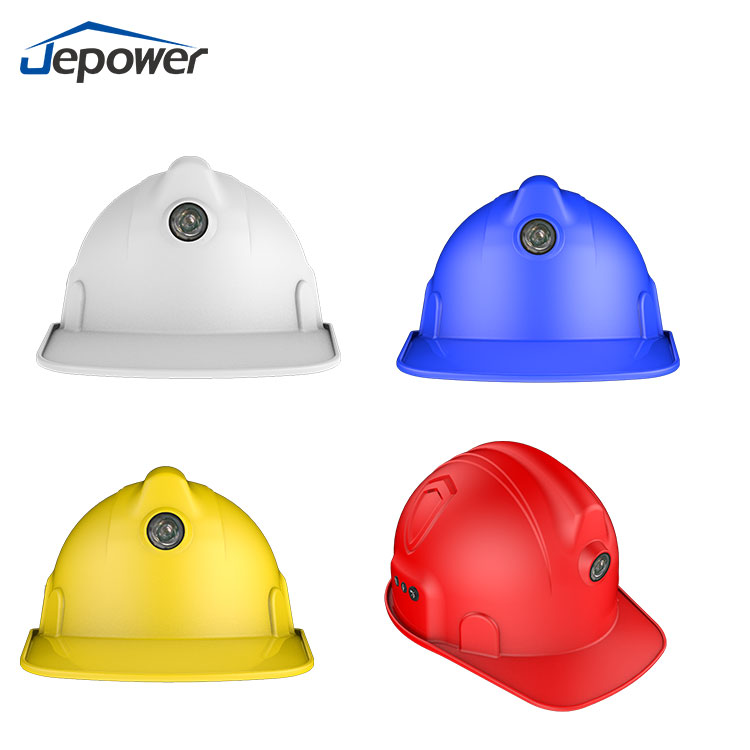
The oil and gas industry has always faced high-risk working environments, including flammable and explosive gas leaks, high-temperature and high-pressure equipment operations, and complex fieldwork conditions. Therefore, effectively enhancing worker safety and work efficiency has become a crucial issue in this industry. In recent years, with technological advancements, smart helmets have gradually become an effective tool to address this problem. This article will explore the specific applications of smart helmets in the oil and gas industry and the advantages they bring. I. Functions and Technical Features of Smart Helmets Smart helmets combine the protective functions of traditional helmets with modern technological features, including the following aspects: Sensor Technology: Smart helmets are equipped with various sensors such as gas sensors, temperature sensors, and humidity sensors to monitor the changes in the environment around workers in real-time. Positioning System: Utilizing GPS and other positioning technologies, they track workers' positions in real-time, ensuring quick location and rescue in emergency situations. Cameras and Communication Devices: Built-in cameras and microphones enable real-time transmission of on-site video and audio through wireless networks, facilitating remote guidance and monitoring. Data Analysis: Through data collection and analysis platforms, they record workers' operational statuses and environmental data, assisting management in decision-making and risk assessment. II. Application Scenarios of Smart Helmets in the Oil and Gas Industry Hazardous Gas Detection and Warning In the extraction and processing of oil and gas, there is often the risk of harmful gas leaks such as methane and hydrogen sulfide. Smart helmets, through their built-in gas sensors, monitor the concentration of harmful gases in the air in real-time. When anomalies are detected, they immediately sound an alarm, prompting workers to evacuate the dangerous area quickly while notifying the command center to take emergency measures. On-site Monitoring and Remote Guidance Production operations in the oil and gas industry often take place in remote areas, making it impossible for management to be on-site at all times. The cameras and communication devices in smart helmets can transmit real-time footage and audio from the site to a remote command center. Experts can use this data to guide workers remotely, ensuring that tasks are performed according to standard procedures, thereby reducing the risk of operational errors. Worker Positioning and Emergency Rescue During operations on oil platforms or in oil fields, workers are spread over vast areas. The positioning function of smart helmets can track each worker's location in real-time. In case of emergencies such as explosions, fires, or injuries, the command center can quickly locate and dispatch rescue teams, reducing rescue time and improving rescue efficiency. Equipment and Environmental Moni...

The oil and gas industry has always faced high-risk working environments, including flammable and explosive gas leaks, high-temperature and high-pressure equipment operations, and complex fieldwork conditions. Therefore, effectively enhancing worker safety and work efficiency has become a crucial issue in this industry. In recent years, with technological advancements, smart helmets have gradually become an effective tool to address this problem. This article will explore the specific applications of smart helmets in the oil and gas industry and the advantages they bring. I. Functions and Technical Features of Smart Helmets Smart helmets combine the protective functions of traditional helmets with modern technological features, including the following aspects: Sensor Technology: Smart helmets are equipped with various sensors such as gas sensors, temperature sensors, and humidity sensors to monitor the changes in the environment around workers in real-time. Positioning System: Utilizing GPS and other positioning technologies, they track workers' positions in real-time, ensuring quick location and rescue in emergency situations. Cameras and Communication Devices: Built-in cameras and microphones enable real-time transmission of on-site video and audio through wireless networks, facilitating remote guidance and monitoring. Data Analysis: Through data collection and analysis platforms, they record workers' operational statuses and environmental data, assisting management in decision-making and risk assessment. II. Application Scenarios of Smart Helmets in the Oil and Gas Industry Hazardous Gas Detection and Warning In the extraction and processing of oil and gas, there is often the risk of harmful gas leaks such as methane and hydrogen sulfide. Smart helmets, through their built-in gas sensors, monitor the concentration of harmful gases in the air in real-time. When anomalies are detected, they immediately sound an alarm, prompting workers to evacuate the dangerous area quickly while notifying the command center to take emergency measures. On-site Monitoring and Remote Guidance Production operations in the oil and gas industry often take place in remote areas, making it impossible for management to be on-site at all times. The cameras and communication devices in smart helmets can transmit real-time footage and audio from the site to a remote command center. Experts can use this data to guide workers remotely, ensuring that tasks are performed according to standard procedures, thereby reducing the risk of operational errors. Worker Positioning and Emergency Rescue During operations on oil platforms or in oil fields, workers are spread over vast areas. The positioning function of smart helmets can track each worker's location in real-time. In case of emergencies such as explosions, fires, or injuries, the command center can quickly locate and dispatch rescue teams, reducing rescue time and improving rescue efficiency. Equipment and Environmental Moni...
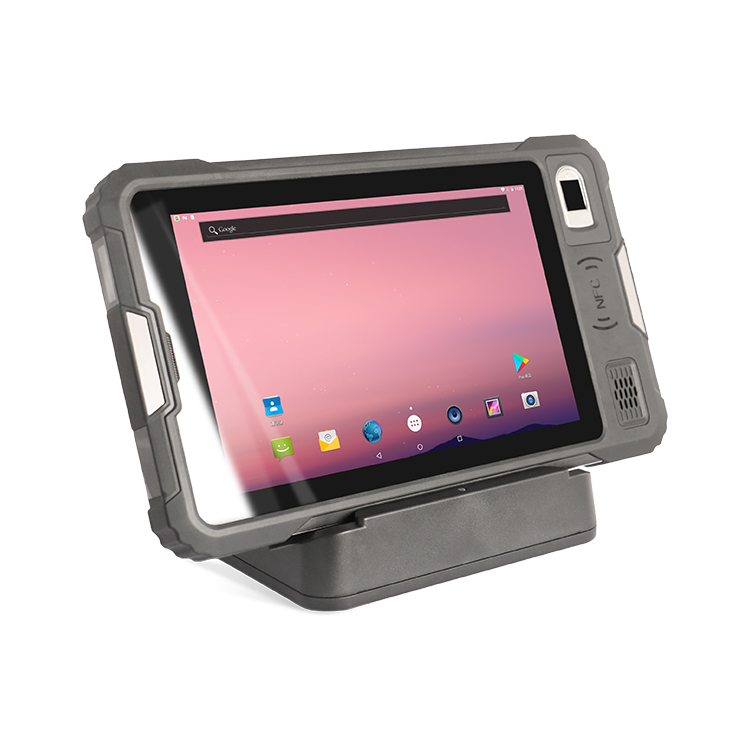
Applications in Production Workshops:
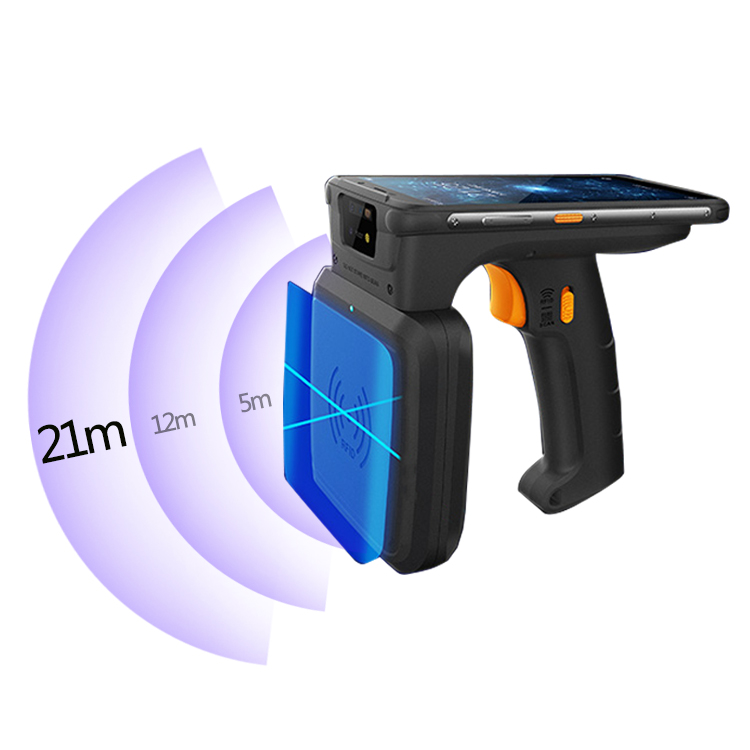
Android handheld PDAs are powerful mobile devices that offer a variety of functionalities and applications in various outdoor scenarios. This article explores the applications of Android handheld PDAs in outdoor environments, including wilderness exploration, logistics delivery, outdoor services, among others, along with real-world use cases and an analysis of their advantages and suitability. In modern society, Android handheld PDAs have become an indispensable part of people's lives. They not only provide convenient mobile office functions but also play an important role in outdoor environments. Whether it's wilderness exploration, logistics delivery, or outdoor services, Android handheld PDAs can provide users with convenience and efficiency. Here are some application examples of Android handheld PDAs in outdoor scenarios: Wilderness Exploration Navigation: In outdoor adventure activities such as hiking, camping, or mountaineering, Android handheld PDAs can be used as navigation tools. With GPS functionality, users can real-time access their location information and view maps, routes, and terrain, helping them safely and accurately reach their destination. Logistics Delivery Management: In the logistics delivery industry, Android handheld PDAs can be used for route planning for delivery personnel, parcel tracking, and confirmation of receipt. Equipped with appropriate logistics management software, real-time monitoring and management of goods can be achieved, improving delivery efficiency and service quality. Outdoor Services Support: In outdoor travel or camping activities, Android handheld PDAs can provide various service supports, including weather forecasts, distress signal transmission, and emergency medical knowledge inquiries. Users can access the information they need anytime, anywhere, ensuring their safety and comfort. Outdoor Survey and Exploration: In fields such as agriculture, forestry, and geology, Android handheld PDAs can be used for data collection, photo shooting, report generatio
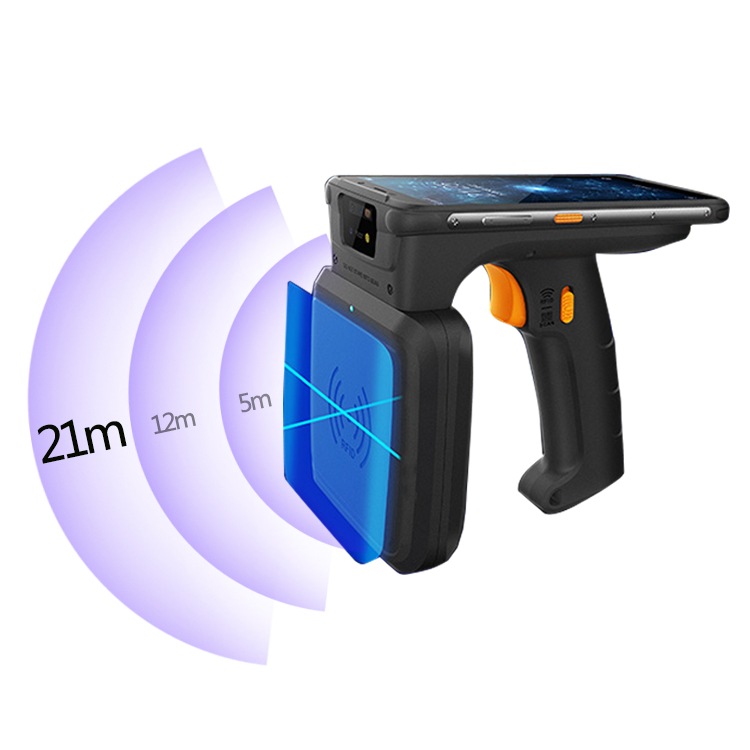
Android handheld PDAs are powerful mobile devices that offer a variety of functionalities and applications in various outdoor scenarios. This article explores the applications of Android handheld PDAs in outdoor environments, including wilderness exploration, logistics delivery, outdoor services, among others, along with real-world use cases and an analysis of their advantages and suitability. In modern society, Android handheld PDAs have become an indispensable part of people's lives. They not only provide convenient mobile office functions but also play an important role in outdoor environments. Whether it's wilderness exploration, logistics delivery, or outdoor services, Android handheld PDAs can provide users with convenience and efficiency. Here are some application examples of Android handheld PDAs in outdoor scenarios: Wilderness Exploration Navigation: In outdoor adventure activities such as hiking, camping, or mountaineering, Android handheld PDAs can be used as navigation tools. With GPS functionality, users can real-time access their location information and view maps, routes, and terrain, helping them safely and accurately reach their destination. Logistics Delivery Management: In the logistics delivery industry, Android handheld PDAs can be used for route planning for delivery personnel, parcel tracking, and confirmation of receipt. Equipped with appropriate logistics management software, real-time monitoring and management of goods can be achieved, improving delivery efficiency and service quality. Outdoor Services Support: In outdoor travel or camping activities, Android handheld PDAs can provide various service supports, including weather forecasts, distress signal transmission, and emergency medical knowledge inquiries. Users can access the information they need anytime, anywhere, ensuring their safety and comfort. Outdoor Survey and Exploration: In fields such as agriculture, forestry, and geology, Android handheld PDAs can be used for data collection, photo shooting, report generatio
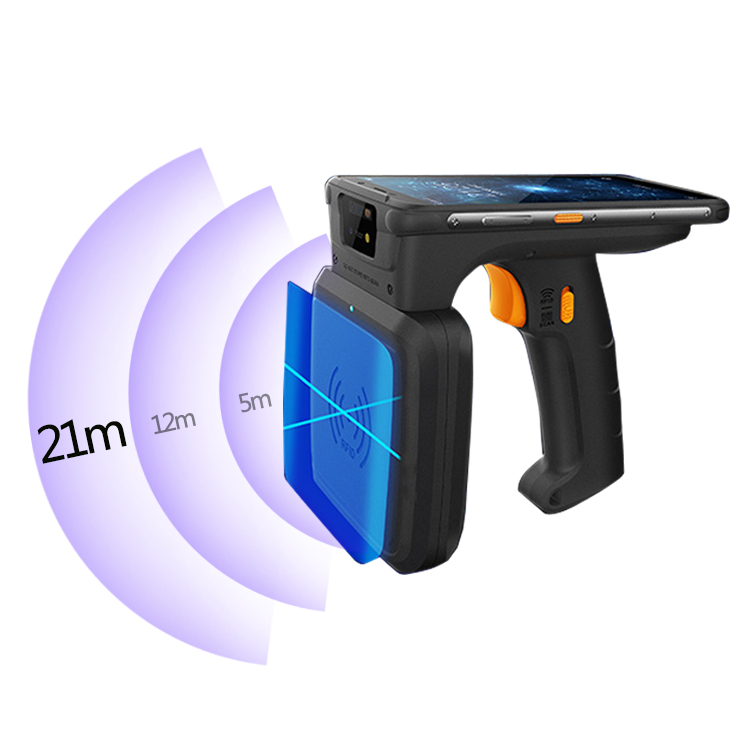
Android handheld PDAs are powerful mobile devices that offer a variety of functionalities and applications in various outdoor scenarios. This article explores the applications of Android handheld PDAs in outdoor environments, including wilderness exploration, logistics delivery, outdoor services, among others, along with real-world use cases and an analysis of their advantages and suitability. In modern society, Android handheld PDAs have become an indispensable part of people's lives. They not only provide convenient mobile office functions but also play an important role in outdoor environments. Whether it's wilderness exploration, logistics delivery, or outdoor services, Android handheld PDAs can provide users with convenience and efficiency. Here are some application examples of Android handheld PDAs in outdoor scenarios: Wilderness Exploration Navigation: In outdoor adventure activities such as hiking, camping, or mountaineering, Android handheld PDAs can be used as navigation tools. With GPS functionality, users can real-time access their location information and view maps, routes, and terrain, helping them safely and accurately reach their destination. Logistics Delivery Management: In the logistics delivery industry, Android handheld PDAs can be used for route planning for delivery personnel, parcel tracking, and confirmation of receipt. Equipped with appropriate logistics management software, real-time monitoring and management of goods can be achieved, improving delivery efficiency and service quality. Outdoor Services Support: In outdoor travel or camping activities, Android handheld PDAs can provide various service supports, including weather forecasts, distress signal transmission, and emergency medical knowledge inquiries. Users can access the information they need anytime, anywhere, ensuring their safety and comfort. Outdoor Survey and Exploration: In fields such as agriculture, forestry, and geology, Android handheld PDAs can be used for data collection, photo shooting, report generatio
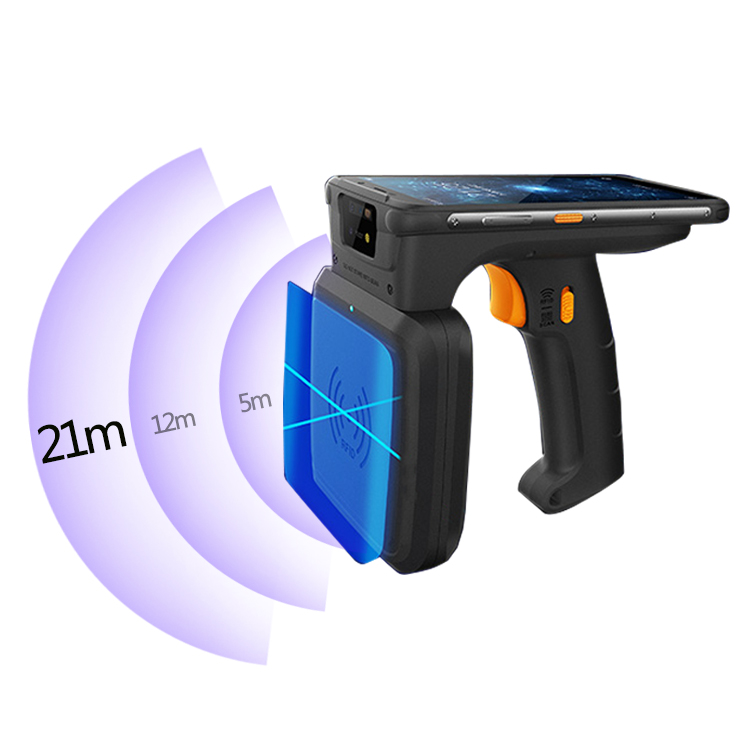
Android handheld PDAs are powerful mobile devices that offer a variety of functionalities and applications in various outdoor scenarios. This article explores the applications of Android handheld PDAs in outdoor environments, including wilderness exploration, logistics delivery, outdoor services, among others, along with real-world use cases and an analysis of their advantages and suitability. In modern society, Android handheld PDAs have become an indispensable part of people's lives. They not only provide convenient mobile office functions but also play an important role in outdoor environments. Whether it's wilderness exploration, logistics delivery, or outdoor services, Android handheld PDAs can provide users with convenience and efficiency. Here are some application examples of Android handheld PDAs in outdoor scenarios: Wilderness Exploration Navigation: In outdoor adventure activities such as hiking, camping, or mountaineering, Android handheld PDAs can be used as navigation tools. With GPS functionality, users can real-time access their location information and view maps, routes, and terrain, helping them safely and accurately reach their destination. Logistics Delivery Management: In the logistics delivery industry, Android handheld PDAs can be used for route planning for delivery personnel, parcel tracking, and confirmation of receipt. Equipped with appropriate logistics management software, real-time monitoring and management of goods can be achieved, improving delivery efficiency and service quality. Outdoor Services Support: In outdoor travel or camping activities, Android handheld PDAs can provide various service supports, including weather forecasts, distress signal transmission, and emergency medical knowledge inquiries. Users can access the information they need anytime, anywhere, ensuring their safety and comfort. Outdoor Survey and Exploration: In fields such as agriculture, forestry, and geology, Android handheld PDAs can be used for data collection, photo shooting, report generatio
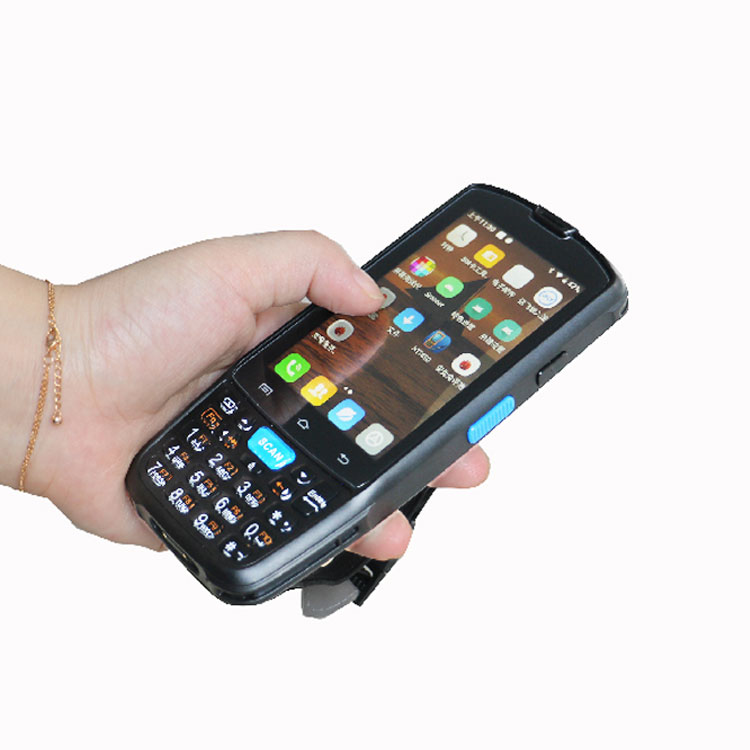
Introduction: In the realm of utility management, the accurate reading of water and electricity meters stands as a crucial task. With the advancement of technology, the integration of portable digital devices like the Wince PDA (Personal Digital Assistant) offers a modern solution to enhance efficiency and precision in meter reading processes. Benefits of Wince PDA in Meter Reading: Wince PDA, equipped with Windows CE operating system, presents several advantages for meter reading tasks: Portability: Wince PDA is lightweight and compact, facilitating easy carriage by meter readers during their fieldwork. Real-time Data Entry: Through wireless connectivity options such as Wi-Fi or Bluetooth, Wince PDA enables real-time data entry directly into central databases, minimizing information delays. Accuracy: The digital interface of Wince PDA reduces the likelihood of manual transcription errors, ensuring the accuracy of meter readings. Automated Validation: Integrated applications within Wince PDA can perform automated validation checks on meter readings, enhancing data integrity. Data Analysis: Wince PDA supports data storage and analysis capabilities, enabling meter reading data to be stored, analyzed, and utilized for informed decision-making. Application Scenarios: The utilization of Wince PDA in water and electricity meter reading can be observed in various scenarios: Field Data Collection: Meter readers employ Wince PDAs to collect meter readings directly from water and electricity meters in the field. Real-time Data Transmission: Meter readings are transmitted in real-time from Wince PDAs to central databases via wireless networks, ensuring up-to-date and accurate data. Automated Validation: Wince PDAs automatically validate meter readings against predefined criteria, flagging discrepancies for further investigation. Data Analysis and Reporting: Meter reading data stored on Wince PDAs are analyzed to identify consumption patterns, detect anomalies, and generate comprehensive reports for utility management. Conclusion: The application of Wince PDA in water and electricity meter reading processes revolutionizes traditional meter reading practices by offering portability, real-time data entry, accuracy, automated validation, and data analysis capabilities. As technology continues to evolve, the integration of Wince PDAs is poised to become more widespread, transforming utility management with increased efficiency and precision.
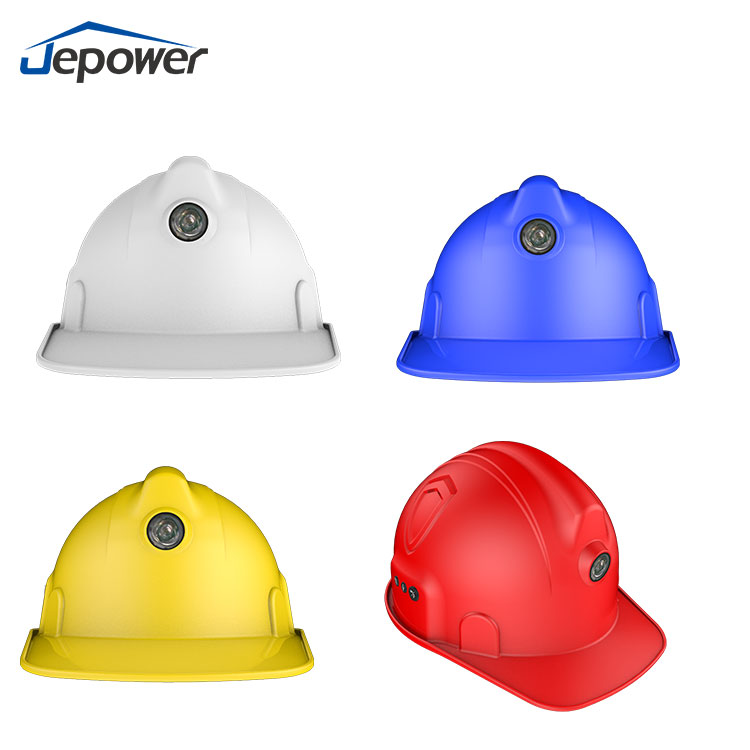
Smart safety helmet is a personal protective equipment that combines the functions of traditional safety helmets with intelligent technology. It usually has the following characteristics: Head protection function: Like traditional safety helmets, the primary function of smart safety helmets is to protect the head from injury. Therefore, the first step is to ensure that the smart safety helmet is correctly worn and used according to its design purpose. Smart features: Smart helmets may be equipped with various sensors, communication devices, and data processing functions to provide additional security protection and convenience. These functions may include accident detection, location tracking, environmental monitoring, etc. Based on the above characteristics, the following are the general usage methods for smart helmets: Choose the appropriate smart safety helmet: Choose the appropriate smart safety helmet according to your needs. Different safety helmets may have different intelligent functions, so choose the appropriate product based on your work environment and activity type. Familiar with operating methods: If the smart helmet has an operating interface or control buttons, make sure you are familiar with its usage. Read the product manual and understand how to operate and configure the smart safety helmet correctly. Proper Wearing: Wear the smart safety helmet correctly on the head, and adjust the size and strap of the hat as needed to ensure a suitable fit. Activate intelligent functions: Activate intelligent functions as needed, such as accident detection, location tracking, etc. This may require connecting to smart computer applications or other control devices to configure and manage. Regular inspection and maintenance: Regularly check the status and function of smart safety helmets to ensure the normal operation of sensors, batteries, and other components. Replace damaged or expired components in a timely manner and follow the manufacturer's maintenance recommendations. Reasonable use of intelligent functions: When using intelligent functions, it is important to use them reasonably to avoid excessive reliance or abuse. Configure and adjust the settings of the smart safety helmet as needed to maximize safety and convenience. By using smart helmets correctly, you can enjoy additional smart features while protecting your head, improving work efficiency and safety.
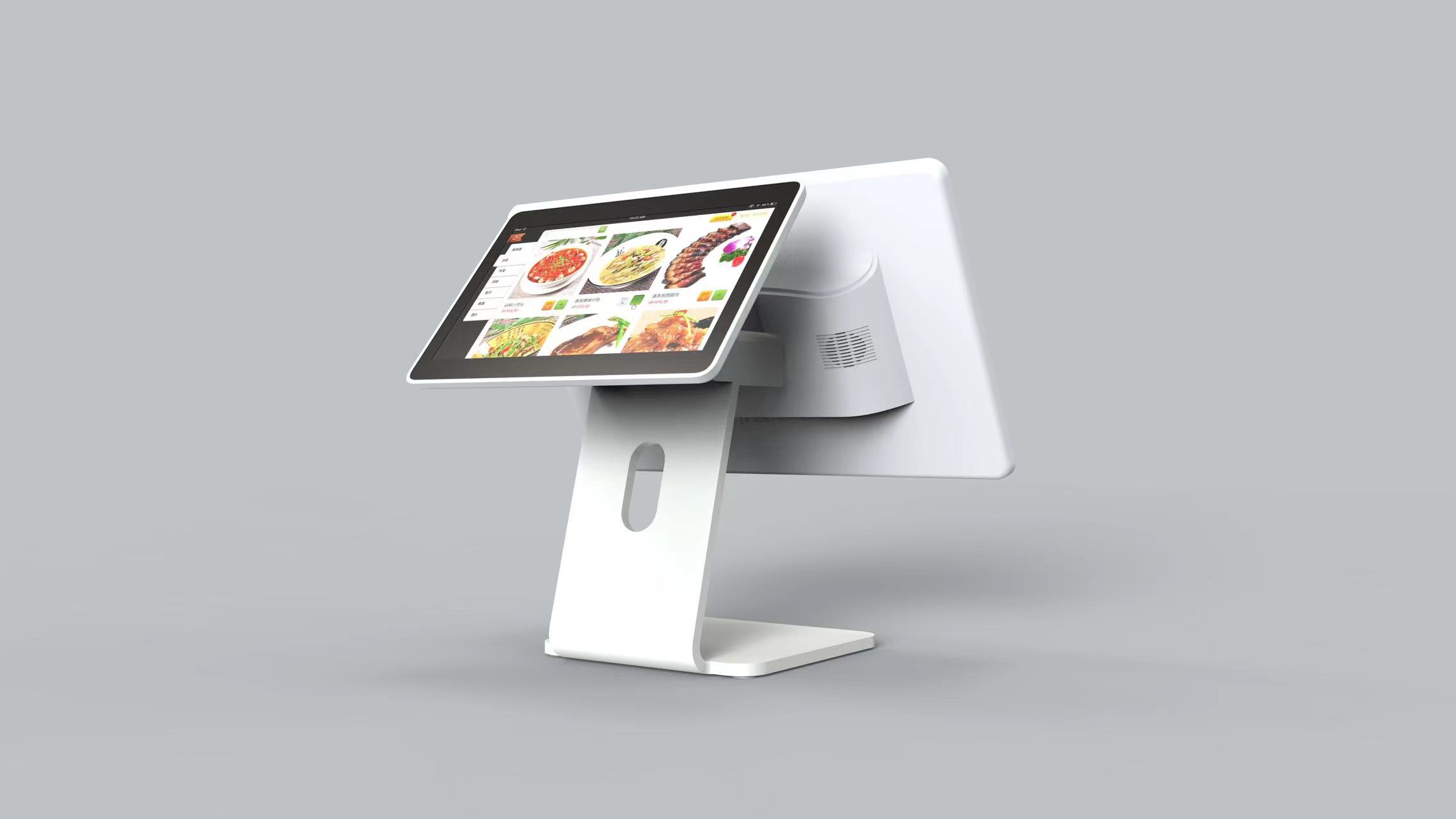
Jepower, like many other Point of Sale (POS) machine providers, would likely undergo digital transformation in several key ways: Hardware Upgrades: Jepower may update their POS machines with more advanced hardware components to improve processing power, memory, and connectivity options. This could involve integrating features such as faster processors, increased storage capacity, and support for newer communication protocols like Bluetooth Low Energy (BLE) or NFC. Software Enhancements: Digital transformation often involves updating the software that powers POS machines. This might include developing more intuitive user interfaces, adding support for new payment methods or loyalty programs, and improving security features to protect against cyber threats such as data breaches or malware attacks. Integration with Cloud Services: Jepower could leverage cloud computing technologies to offer cloud-based POS solutions. This would enable businesses to access their POS data remotely, manage inventory in real-time, and streamline operations through centralized management tools. Cloud integration also facilitates automatic software updates and scalability to accommodate business growth. Data Analytics and Insights: By incorporating data analytics capabilities into their POS systems, Jepower can help businesses gain valuable insights into customer behavior, sales trends, and inventory management. This can enable businesses to make data-driven decisions that optimize operations and drive revenue growth. Mobile POS Solutions: As mobile technology continues to advance, Jepower may develop mobile POS solutions that allow businesses to accept payments anywhere using smartphones or tablets. These solutions can enhance flexibility and convenience for both merchants and customers, especially in industries like retail and hospitality. Embracing IoT and AI: Integration of Internet of Things (IoT) devices and Artificial Intelligence (AI) algorithms can enhance the capabilities of POS systems. IoT sensors can provide real-time data on factors like foot traffic and inventory levels, while AI algorithms can automate tasks such as fraud detection, personalized marketing, and predictive analytics. Enhanced Security Measures: With the increasing prevalence of cyber threats, Jepower would need to prioritize security in their POS solutions. This involves implementing robust encryption standards, tokenization for sensitive data, and advanced authentication methods like biometrics to ensure the security of transactions and customer information. Overall, Jepower's digital transformation of its POS machines would involve a holistic approach that combines hardware innovation, software development, cloud integration, data analytics, and security enhancements to meet the evolving needs of businesses in the digital age.
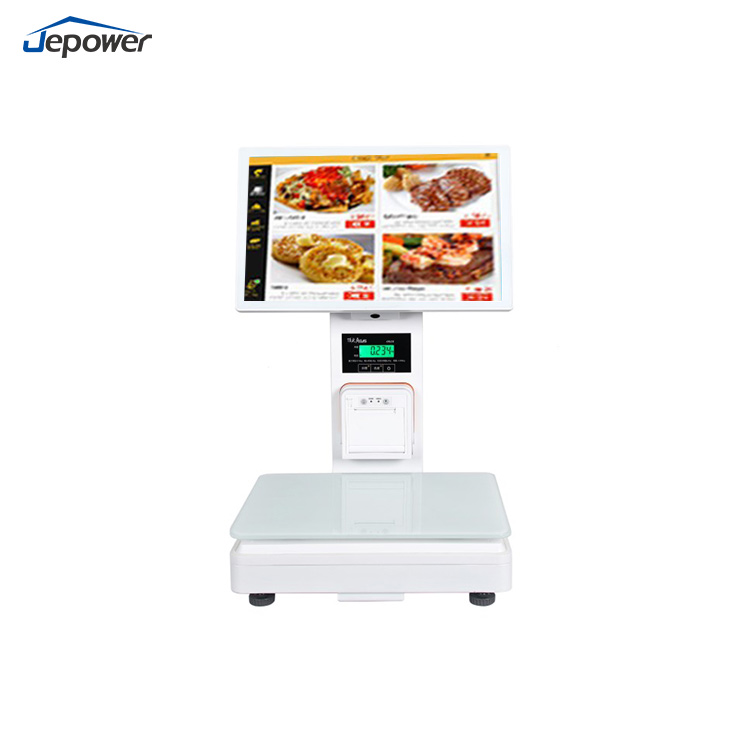
In the bustling world of supermarkets, efficiency and customer satisfaction reign supreme. With the advent of AI weighing integrated machines, the landscape of supermarket operations is undergoing a transformative shift. These cutting-edge devices, empowered by artificial intelligence, are not just streamlining processes but redefining the very essence of how supermarkets cater to their clientele. self-service kiosks and AI checkout kiosks Picture yourself navigating the aisles of your go-to supermarket,self-service kiosks and AI checkout kiosks effortlessly selecting items and placing them onto a sleek, futuristic device. With AI weighing integrated machines, this isn't a mere fantasy but a tangible reality. Employing advanced image recognition and AI algorithms, these machines swiftly identify and weigh products, bypassing the need for manual scanning. This not only saves customers precious time but also minimizes wait times, enriching the overall shopping experience with unparalleled convenience and efficiency. Self-service KiosksUnprecedented Precision in Measurement and Pricing Gone are the days of guesswork and pricing inaccuracies. Self-service Kiosks utilize high-precision sensors and intelligent algorithms to ensure precise product weighing, coupled with accurate pricing based on actual weight. This eradicates discrepancies, safeguarding customer rights and fortifying the supermarket's reputation for integrity and fairness. Moreover, these machines can dynamically adjust pricing in response to market trends and inventory conditions, furnishing supermarkets with invaluable insights for strategic pricing decisions. Harnessing Data for Strategic Insights In the realm of retail, data reigns supreme. AI checkout kiosk serve as invaluable repositories of sales data, capturing vital metrics such as sales volume, revenue, and customer preferences in real-time. Through comprehensive data analysis, supermarkets gain actionable insights into consumer behavior, empowering them to optimize product placement, procurement strategies, and promotional campaigns. Seamlessly integrated with existing management systems, these machines enable supermarkets to unlock the full potential of data-driven decision-making, fostering operational efficiency and strategic agility. jepower AI Checkout Kiosk,Enhancing Supermarket Image and Competitiveness Embracing AI weighing integrated machines signals a supermarket's commitment to innovation and customer-centricity, thereby enhancing its brand image and competitive edge. Technologically advanced supermarkets are perceived as trustworthy, modern, and attentive to customer needs, fostering loyalty and positive word-of-mouth. Moreover, streamlined operations and enhanced shopping experiences draw more foot traffic, propelling supermarkets ahead in the fiercely competitive retail landscape. In conclusion, AI weighing integrated machines represent a paradigm shift in supermarket operations, ushering in an era o...
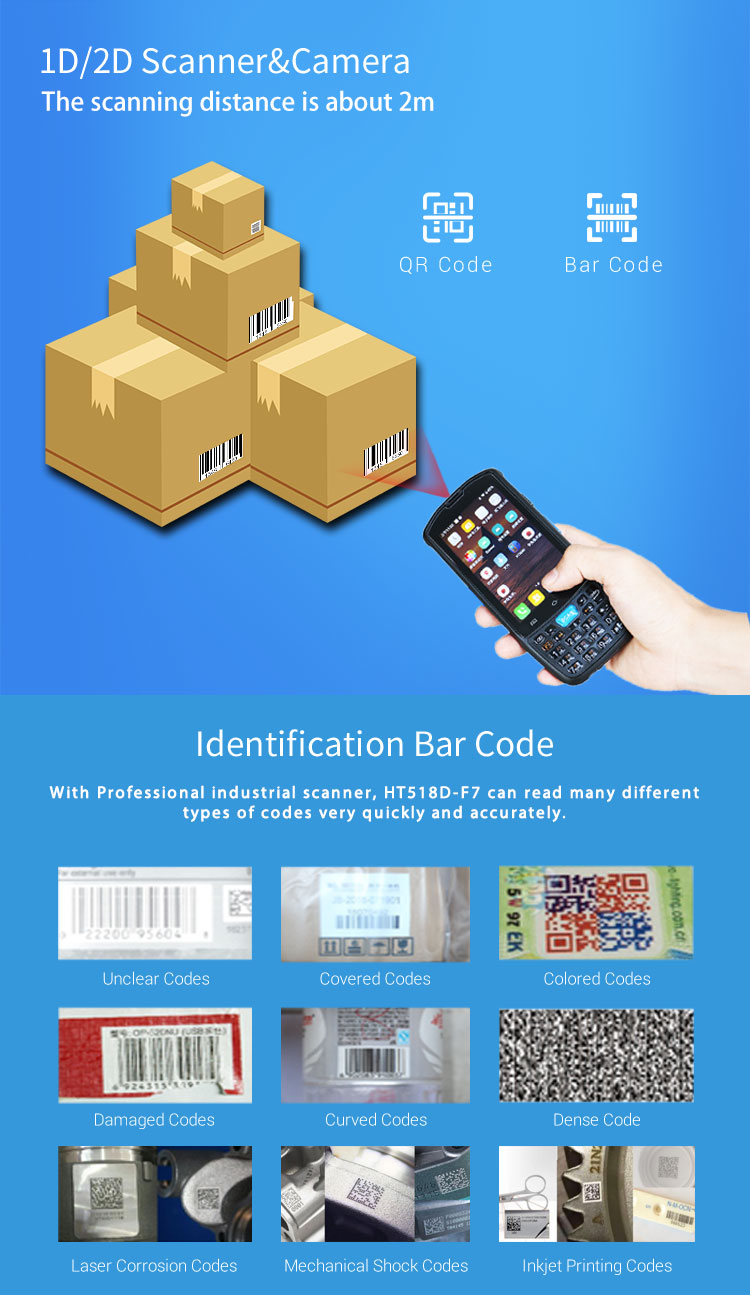
In the realm of modern warehouse management, the utilization of handheld PDAs (Personal Digital Assistants) has become a commonplace practice. These mobile computers, powered by the Android operating system and equipped with barcode scanning capabilities, offer unprecedented convenience and efficiency in inventory management. This article delves into the application of handheld PDAs in warehouse inventory management and the benefits they bring. Warehouse inventory management is a critical process for ensuring the accuracy of stock levels. Traditional inventory methods often require significant manpower and time, leading to errors and omissions. However, with the advancement of mobile technology, the introduction of handheld PDAs has revolutionized inventory tasks, making them more efficient and accurate. First and foremost, handheld PDAs offer portability and flexibility. Compared to traditional laptops or manual recording methods, PDAs are lightweight and offer more agility in operation. Inventory personnel can easily carry PDAs around the warehouse, unrestricted by space, and can efficiently scan barcodes on products. Furthermore, handheld PDAs are powered by the Android operating system, providing access to a plethora of applications. Warehouse management software can be seamlessly installed on PDAs, allowing real-time connectivity to backend databases. Inventory personnel can instantly access inventory information via PDAs, ensuring timely updates and reducing the occurrence of inventory errors and duplications. Additionally, handheld PDAs come equipped with built-in barcode scanners, streamlining the inventory process. Personnel can swiftly scan product barcodes using PDAs, eliminating the need for manual data entry and significantly improving work efficiency while minimizing human errors. In conclusion, leveraging handheld PDAs for warehouse inventory management can significantly enhance efficiency and accuracy. Their portability, Android operating system, and barcode scanning capabilities offer new possibilities for warehouse management. With ongoing advancements in mobile technology, the prospects for utilizing handheld PDAs in warehouse management are promising and continue to evolve.

Palm Print Payment Devices represent the next frontier in payment technology. These devices utilize biometric authentication by scanning the unique vein patterns in an individual's palm to verify their identity. By leveraging this cutting-edge biometric technology, Palm Print Payment Devices offer a seamless and secure payment experience without the need for physical cards or devices. Retail Stores and Supermarkets: In retail environments, Palm Print Payment Devices streamline the checkout process, allowing customers to simply scan their palm to complete transactions. This not only reduces checkout times but also enhances security by eliminating the risk of card fraud or theft. Convenience Stores and Gas Stations: For quick transactions at convenience stores or gas stations, Palm Print Payment Devices offer unparalleled speed and convenience. Customers can pay for their purchases with a simple palm scan, making the entire process faster and more efficient. Public Transportation: Palm Print Payment Devices can also be integrated into public transportation systems, allowing passengers to pay for fares with a quick palm scan. This eliminates the need for physical tickets or smart cards, simplifying the payment process for commuters. Entertainment Venues: From movie theaters to amusement parks, entertainment venues can leverage Palm Print Payment Devices to streamline ticketing and concession purchases. Customers can enjoy a hassle-free experience by simply scanning their palm to gain entry or make purchases. Hospitality Industry: Hotels and restaurants can enhance guest experiences by implementing Palm Print Payment Devices for room charges and dining payments. Guests can conveniently settle their bills with a quick palm scan, eliminating the need for physical cards or cash. Convenience: Palm Print Payment Devices offer a fast and frictionless payment experience, allowing users to complete transactions with a simple palm scan. Security: Biometric authentication ensures that payments are secure and reliable, reducing the risk of fraud or identity theft. Efficiency: By eliminating the need for physical cards or devices, Palm Print Payment Devices streamline payment processes, saving time for both customers and businesses. Versatility: Palm Print Payment Devices can be deployed across various industries and environments, making them a versatile solution for convenient payments.
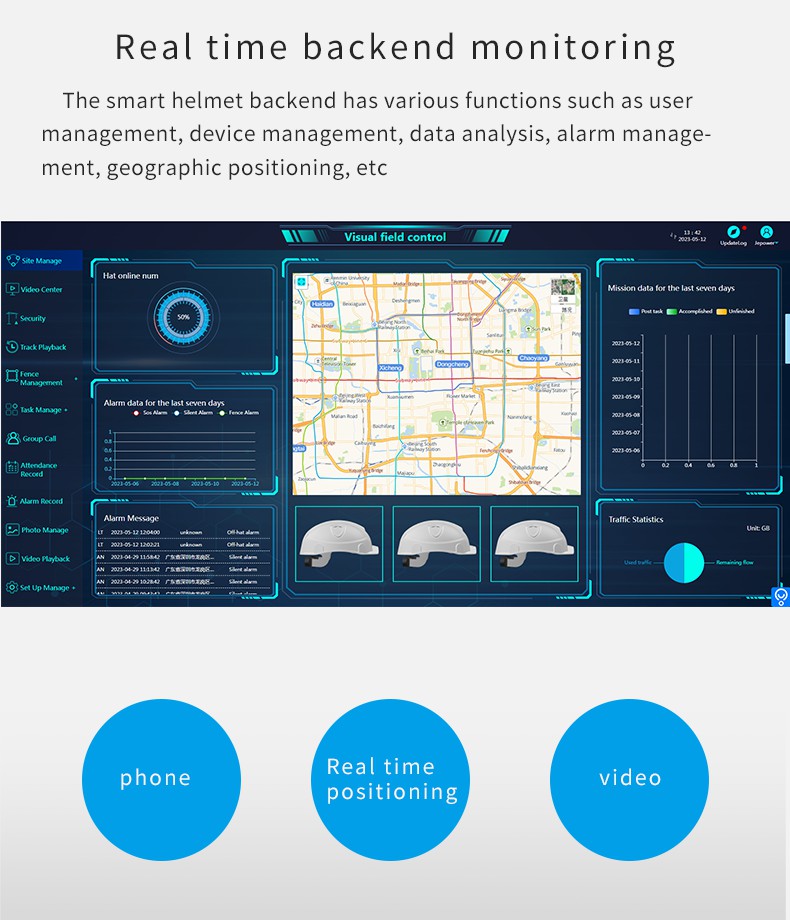
Safety is paramount on today's construction sites, and the application of smart technology is providing new solutions to this goal. Smart safety helmets have become indispensable tools for construction workers, combining advanced technology with safety requirements to bring new possibilities to construction sites. Overview of Smart Safety Helmets Smart safety helmets are innovative products that integrate Android technology, aimed at improving the safety of coal miners in hazardous environments. These helmets boast various advanced features, including 4G/3G/WiFi support, cameras, GPS positioning, providing workers with comprehensive safety protection and support. Enhancing Site Safety and Efficiency On smart construction sites, workers wear these smart safety helmets, enjoying a new working experience. Firstly, the cameras on the helmets can monitor the site situation in real-time and transmit videos to the management center, helping managers promptly identify issues and take action. Additionally, the GPS positioning function ensures managers know the precise location of each worker, enabling quick localization and rescue in emergencies. Moreover, through 4G/3G/WiFi support, workers can communicate with team members in real-time, coordinating work progress and improving efficiency. Integration of Technology and Safety Smart safety helmets integrate advanced technology with the safety requirements of construction sites, providing workers with comprehensive safety protection. Helmets made of ABS material have excellent protective performance, shielding workers from external impacts. The built-in cameras and sensors can detect potential safety hazards promptly, issuing alerts to help workers react quickly and prevent accidents. Future Prospects With the continuous development of smart technology, jepower.net/smart-hard-hat_c2 will be continuously upgraded and improved, providing construction sites with more comprehensive and intelligent solutions for safety management. Meanwhile, the construction industry will usher in safer and more efficient working environments, contributing to the construction of better cities. On smart construction sites, smart safety helmets have become indispensable tools for workers, providing reliable protection and support for the safety and efficiency of construction projects. It is believed that with the continuous advancement and innovation of technology, smart safety helmets will play an increasingly important role in the construction industry.
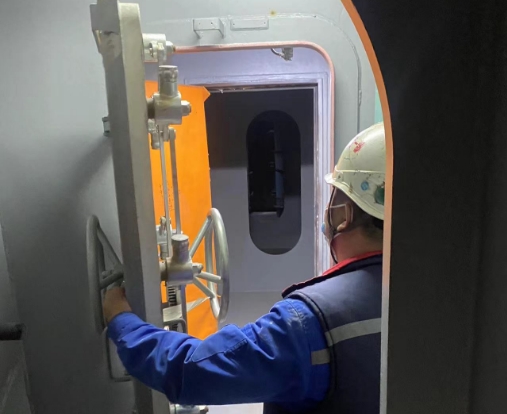
A smart safety helmet is a head protection device that integrates advanced technology and has multiple characteristics. Firstly, the intelligent safety helmet adopts various sensor technologies, such as accelerometers, gyroscopes, gas sensors, etc., which can monitor the physiological status and working environment of crew members in real-time. These sensors can detect the physical activity, posture, body temperature, heart rate, and other information of crew members, thereby timely detecting abnormal situations and taking corresponding measures to improve the safety of crew members. Secondly, the smart safety helmet has communication function and can be equipped with wireless walkie talkies or Bluetooth modules, enabling real-time communication between crew members. In this way, crew members can quickly communicate and coordinate in emergency situations, improve the efficiency of responding to emergencies, and thus ensure the safety of crew members. In addition, the smart safety helmet also has a built-in positioning and navigation system, such as GPS module or inertial navigation system, which can achieve real-time monitoring and positioning of the crew's position. This helps ship management personnel to understand the distribution of crew positions, dispatch rescue teams or dispatch workers in a timely manner, and further improve the safety of crew members. In addition, the smart safety helmet also has the function of data recording and analysis. It can record data such as crew working hours, work intensity, and work environment, and conduct analysis and statistics. This helps ship managers to understand the work situation of crew members, improve work efficiency and safety management level. smart safety helmet construction have certain potential and practical significance in the field of ship applications, mainly reflected in the following aspects: Personnel safety monitoring: Intelligent safety helmets can be equipped with various sensors and monitoring devices, such as accelerometers, gyroscopes, gas sensors, etc., to monitor the physiological status and working environment of crew members. By monitoring the physical condition of crew members in real-time, abnormal situations can be detected in a timely manner and measures can be taken to improve the safety of crew members. Environmental monitoring: Smart helmets can be equipped with various environmental sensors, such as temperature sensors, humidity sensors, pressure sensors, etc., to monitor the internal and surrounding environment of ships. This helps to promptly identify factors that may affect the safety of crew members, such as fires, gas leaks, etc., and take corresponding emergency measures. Positioning navigation: By utilizing the built-in positioning device of smart helmets, such as GPS modules or inertial navigation systems, real-time monitoring and positioning of crew positions can be achieved. This helps ship management personnel to understand the distribution of crew pos...
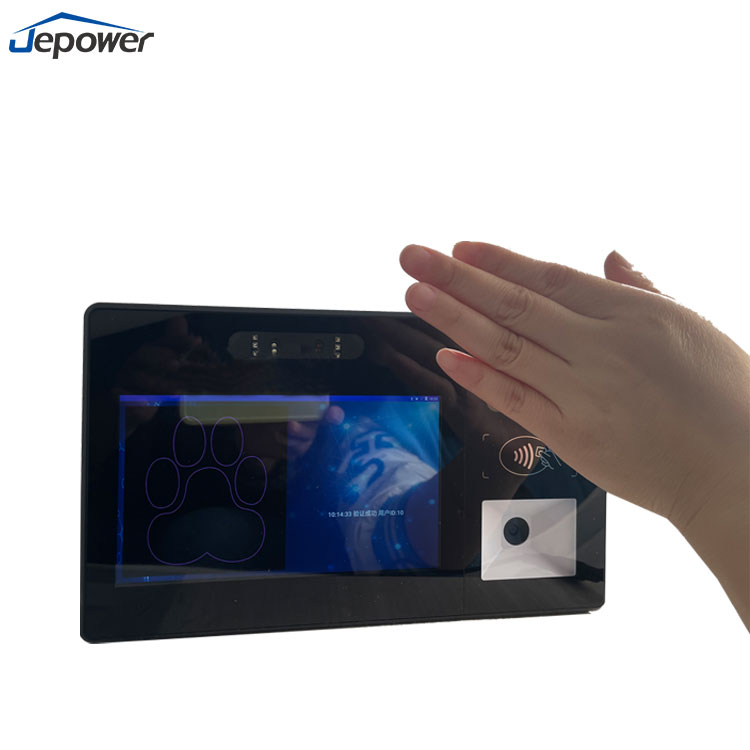
With the popularization of smartphones, mobile payment has become an indispensable part of our daily life: payment can be completed with just a simple scan of the QR code. However, mobile payment also has its limitations, such as sometimes forgetting to bring our phone, running out of battery, or even losing it. In this situation, taking the subway or purchasing goods will be restricted. Fortunately, the development and innovation of technology have provided us with more choices. Based on the current development trend, after facial payment, palm payment may become another novel payment method. What is mobile payment? Simply put, it is a technology that identifies users through the palmprint on their palms and achieves contactless payment. It fully utilizes the unique and complex vascular patterns on each person's palm, treating the palm as a personal "biometric card" for interaction. Compared with fingerprint recognition, palm recognition has the advantages of large recognition area and high efficiency. In my experience, compared to traditional password and physical card payments, swipe payment has the following advantages: High safety, the patterns formed by the subcutaneous vascular structure of the palm are very complex and cannot be forged, greatly preventing the risk of stealing brushes; Convenient and efficient, palm swiping payment is a completely contactless operation that does not require taking out a phone, memorizing passwords, or carrying cards, making payment faster and more efficient; Clean and hygienic, non-contact payment method to prevent the spread of bacteria due to contact with the screen when going out; To prevent loss, the palm can be scanned and used under normal circumstances, avoiding the risk of funds being stolen after the loss of mobile phones and physical cards. The first mobile payment product launched in China is WeChat mobile payment. Starting from May 2021, WeChat officially launched this service. In the initial stage, it was mainly used in scenarios such as the Beijing Metro Daxing Airport Line and Shenzhen Super Gorilla. Subsequently, WeChat accelerated its expansion speed and expanded its services to over 1500 stores, including 7-11 convenience stores, in September 2022. Users only need to register their palm print according to the requirements and can "swipe" to complete the payment. At the same time, Alipay also began to deploy palm biometrics in the second half of 2022, but has not yet launched experience products. Technically speaking, compared to fingerprint and facial recognition, the biggest advantage of palm swiping payment is its high recognition accuracy and difficulty in forgery. Because each person's palm blood vessel pattern is extremely unique, it is difficult to steal other people's palm data for personal use through simple rubbings. In addition, compared to the operation of taking out a phone from a pocket or bag for payment, simply swiping the palm is more instant and convenient. At the same ti...
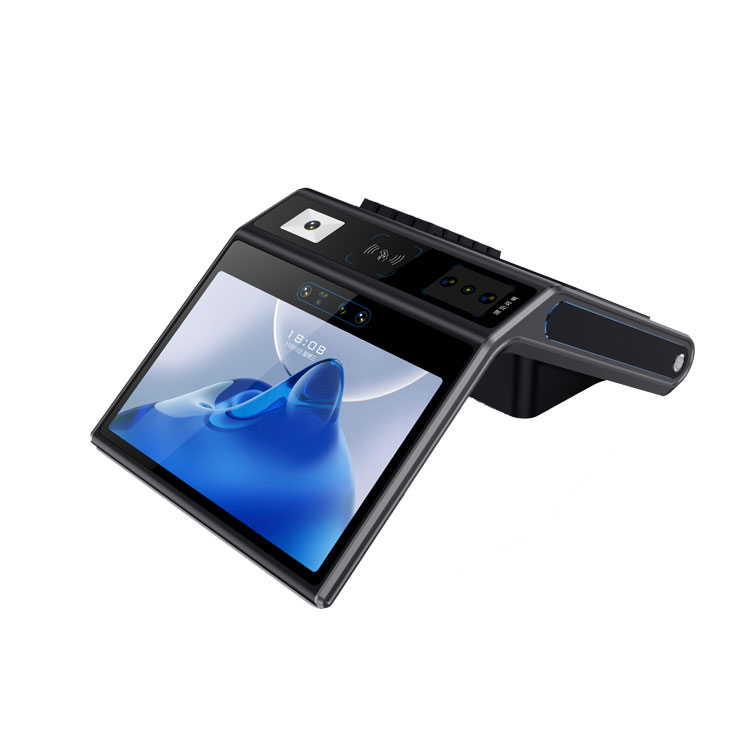
Jepower is honored to launch its latest 10 inch integrated desktop POS - TX100PULS. With its mini size, high performance, and versatility, it aims to become the next generation solution for modern retailers. 10.1-inch POS machine, Android POS machine 1. 2x improvement in performance of eight core processors This latest JEPOWER intelligent POS terminal is equipped with an eight core processor and Android 13 operating system, with a performance improvement of 200%. The processing speed of TX100PULS is three times faster than regular POS, and the application startup speed is 10% faster. 10.1-inch POS machine, Android POS machine 2. 10 inch+4 inch dual screen The POS terminal TX100PULS is equipped with a 10 inch IPS main touch screen with a brightness of 400 nits and a 4-inch customer-oriented display screen, providing vast display space, enhancing intuitive and user-friendly interfaces, promoting seamless transaction processing and excellent customer experience services. The dual display modes provided, namely mirrored display and extended display, promote enhanced customer interaction and provide additional avenues for promotional activities. 10.1-inch POS machine, Android POS machine 3. Multiple payment methods such as POS The 10 inch POS terminal supports multiple payment methods such as QR code, NFC, POS, etc., meeting the diverse needs of consumers and ensuring flexibility in payment processing. 4. 80mm, precision printer, speed 200mm/s Equipped with 80mm Φ An 80mm precision precision printer with a printing speed of up to 200mm/s can quickly and efficiently print more content, further improving checkout efficiency. 10.1-inch POS machine, Android POS machine 5. Rich Ports In addition, POS machines offer a wide range of connectivity options and seamlessly integrate with other devices and systems such as barcode scanners and drawers, enabling businesses to provide a wider range of functions and services, ultimately enhancing the overall customer experience. 10.1-inch POS machine, Android POS machine The POS device is a 10 inch POS terminal that features the size of a mini, unparalleled performance, multifunctional connectivity, and comprehensive functionality, simplifying operations and elevating customer service to new heights. Welcome to contact us for more details.
Copyright © 2015-2024 Guangzhou Jiebao Technology Co.,Ltd.All Rights Reserved.
Friendly Links :
Android Pos Terminal